M2 Machines Auto-Driver 1969 Road Runner 440 Six-pack *
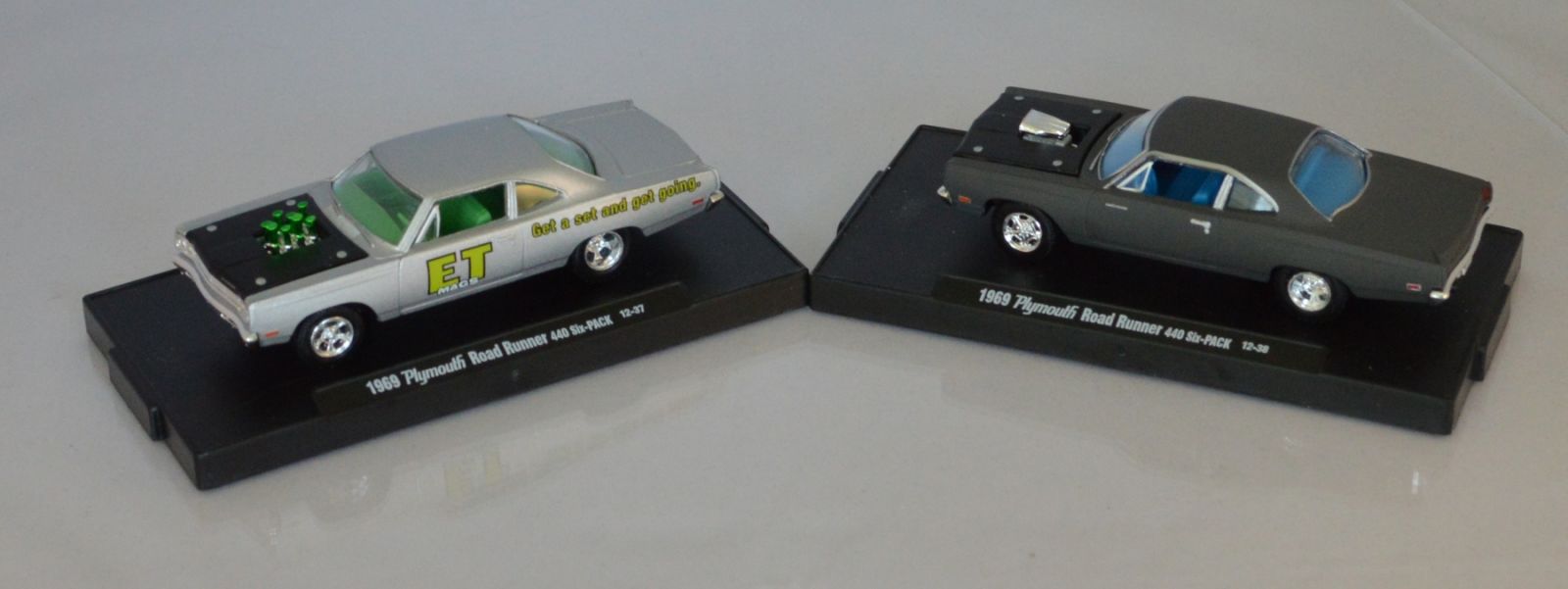
* These M2 Machines models are incorrectly labeled as “440 Six-pack”. Available from 1969 to 1971 on the highest-output version of the 440, an intake setup with three two-barrel carburetors produced 390 gross hp and was marketed as “440 Six-Pack” for Dodge and as “440-6 Barrel” for Plymouth.
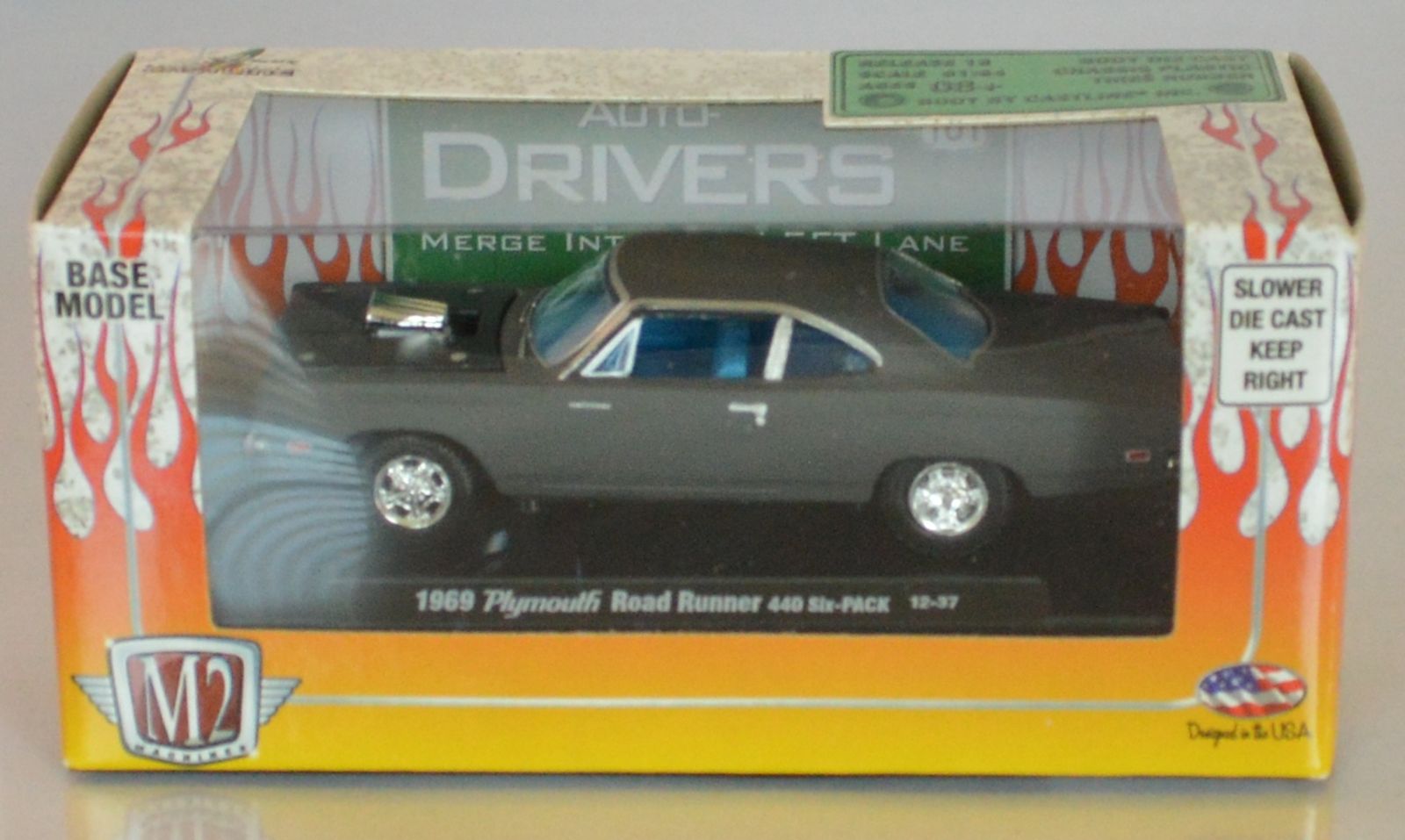
In 1968 Plymouth set out to build a back-to-basics muscle car, paying $50,000 to Warner Bros.-Seven Arts to use the name and likeness of their Road Runner cartoon character (as well as a “beep, beep” horn, which Plymouth paid $10,000 to develop), and using the Chrysler B platform as a base (the same as the Belvedere).
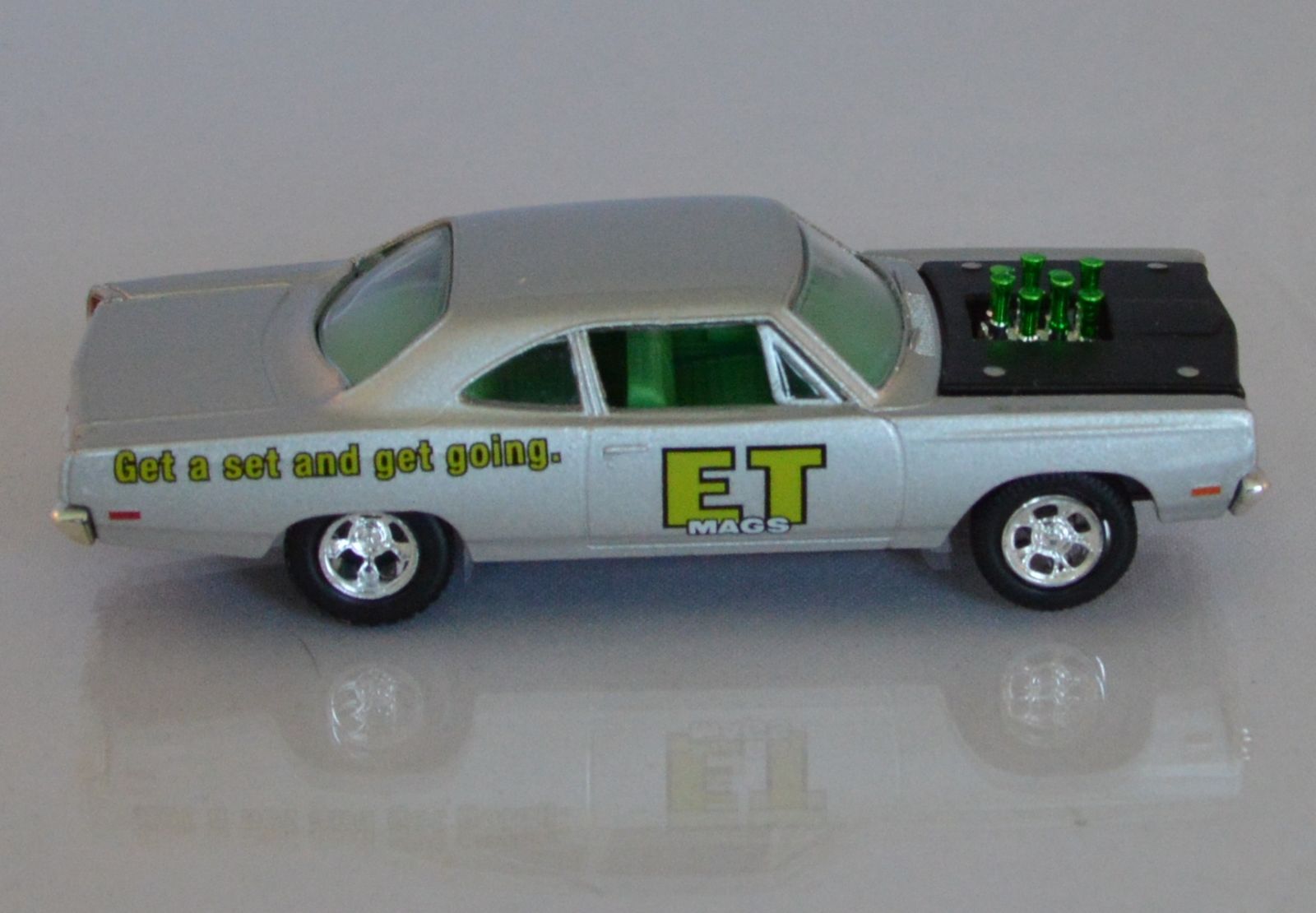
In 1969 the 383 Commando was the standard engine, with the 426 Hemi the only engine option available until mid-year. The 440 engine option with a single Carter four-barrel or three Holley 2 barrel carburetors was added to the lineup at mid-year. The 440 was marketed as the Magnum in Dodges, the Super Commando in Plymouths, and the TNT in Chryslers.
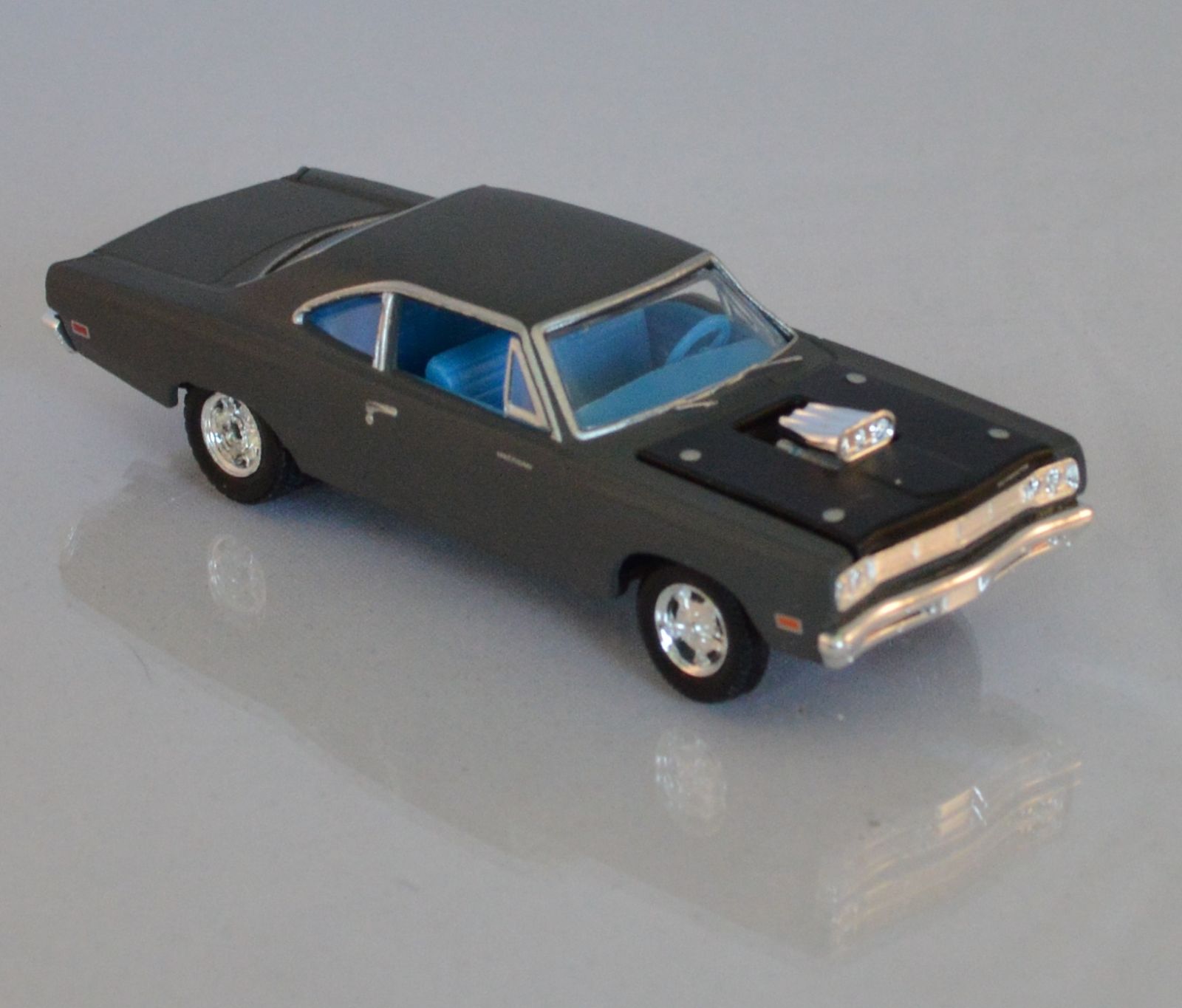
440 6-bbl Road Runners had no wheel covers or hubcaps, sporting only the 15x6” “H” stamped steel black wheels with chrome lug nuts. They featured a black fiberglass lift-off hood with 4 hood pins and a large functional hood scoop with a red sticker on each side saying “440 6BBL”. The scoop sealed to the large air breather. All cars had a Dana 60 rear axle with a 4.10 gear ratio.
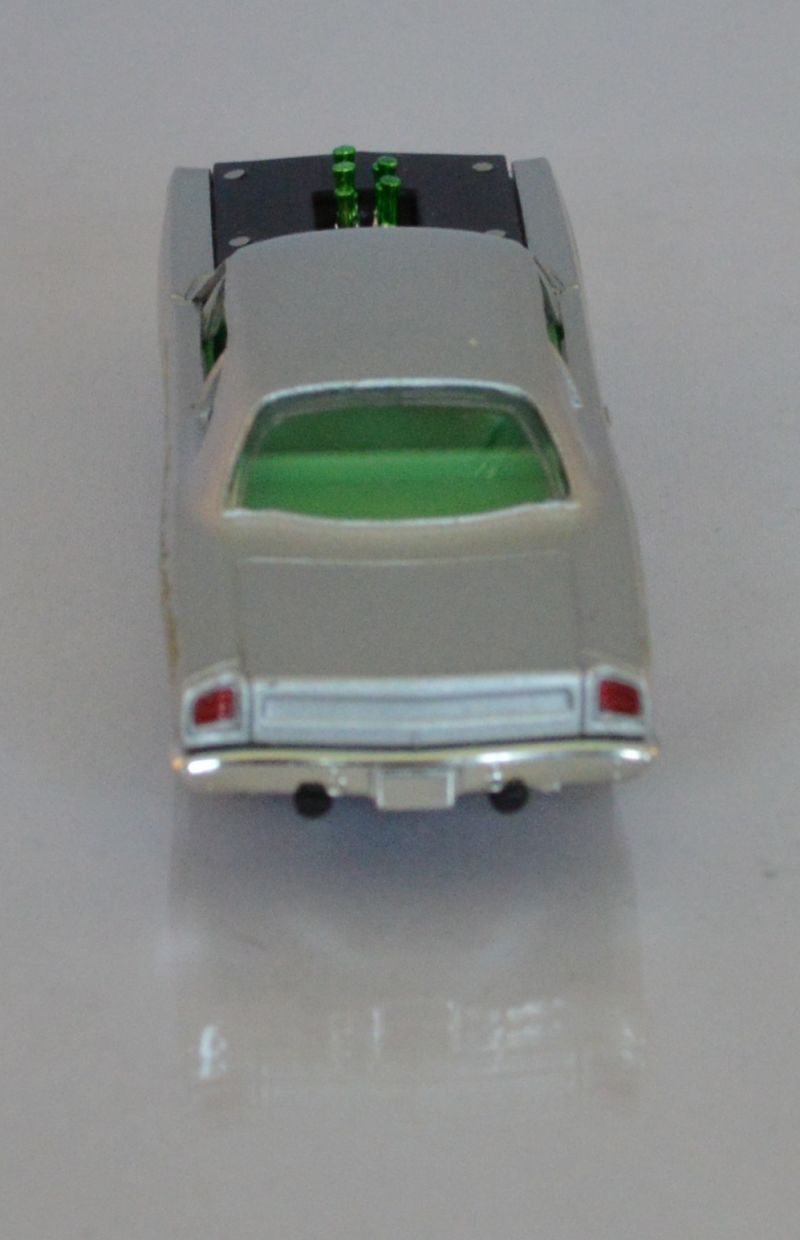
The 440 engine was rated at 390 hp (291 kW) @ 4700 rpm, and 490 pound-feet of torque @ 3200 rpm, the same torque as the Hemi but at a lower engine speed. This meant the stock 440-6bbl, with its lighter engine and hood, was about as fast as the stock 426 Hemi in the 1/4 mile.

The Plymouth Road Runner was named Motor Trend “Car of the Year” for 1969 with sales topping 84,000 that year.
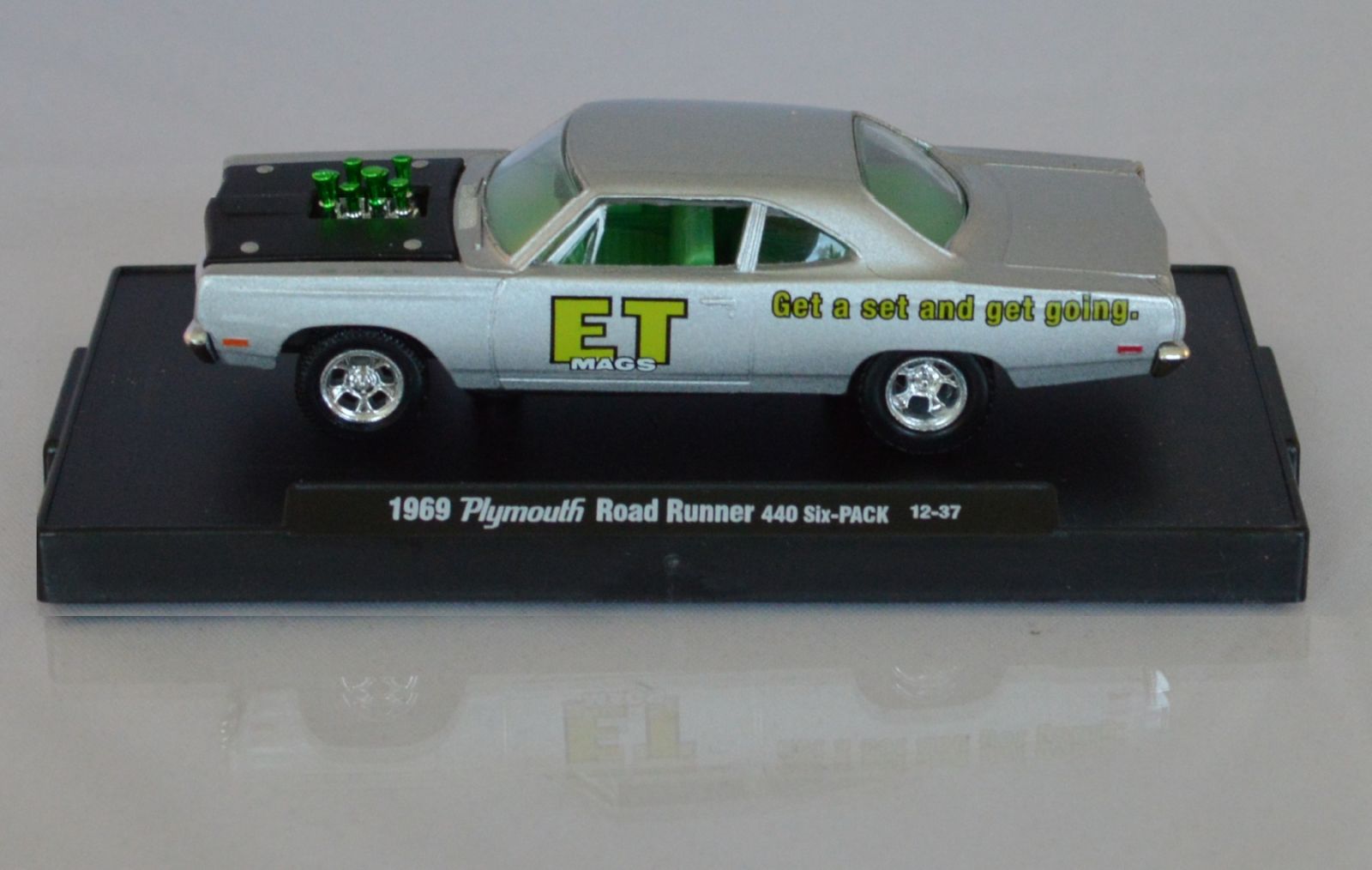
Other notable 3x2-bbl domestic engines:
Most fans of sixties muscle cars associate triple two-barrel carburetor setups with Pontiac, but the first GM division to offer such an arrangement was actually Oldsmobile, which launched its tri-carb J-2 option in January 1957. The J-2 package, priced at $83, included a trio of Rochester 2G carburetors with a vacuum-operated linkage. The engine normally cruised on the center carburetor, but greater demand would engage the front and rear carbs for more power. Oldsmobile quietly dropped the option at the end of the 1958 model year. Pontiac launched its own triple-carburetor setup, directly inspired by the Olds design, in early 1957. Pontiac did a much better job of promoting the “Tri-Power” engine than Olds did and it remained a prominent Pontiac option ending with the 1966 top-of-the-line 421 HO Tri-Power engine. In 1966, Oldsmobile reintroduced their triple-carb setup in a hotter tri-power L69 engine option for the 4-4-2. Unlike the earlier J-2, the L69 engine had three Carter two-barrels with a more predictable progressive linkage. It was available for a single year only, as in 1967 GM management banned multiple-carburetor engines for all cars except the Chevrolet Corvette and Corvair, outlawing both Oldsmobile’s L69 and the Tri-Power Pontiacs.